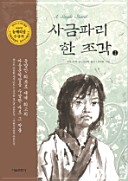
Tree-ear, a thirteen-year-old orphan in medieval Korea, lives under a bridge in a potters’ village, and longs to learn how to throw the delicate celadon ceramics himself. (This book is entirely in Korean).
Historical Fiction genre

Tree-ear, a thirteen-year-old orphan in medieval Korea, lives under a bridge in a potters’ village, and longs to learn how to throw the delicate celadon ceramics himself. (This book is entirely in Korean).
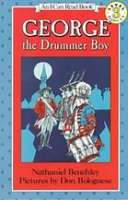
More than two hundred years ago, Boston belonged to the British. George was a drummer boy with the King’s soldiers there. He wanted to be friends with the people of Boston. But they did not like the soldiers. They shouted and threw things at them.
One night, George and the other soldiers were sent on a secret mission. They crossed the river and headed toward Concord. George had no idea that this was the start of the American Revolution.
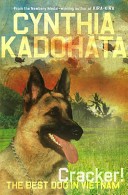
A young soldier in Vietnam bonds with his bomb-sniffing dog.
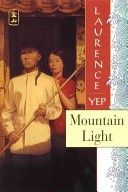
Swept up in one of the local rebellions against the Manchus in China, nineteen-year-old Squeaky loses his home and travels to America to seek his fortune among the gold fields of California. Sequel to “The Serpent’s Children.”
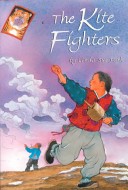
In Korea in 1473, eleven-year-old Young-sup overcomes his rivalry with his older brother Kee-sup, who as the first-born son receives special treatment from their father, and combines his kite-flying skill with Kee-sup’s kite-making skill in an attempt to attract the notice of Korea’s young king, who chooses Young-sup to fly the royal kite in the New Year kite-flying competition.
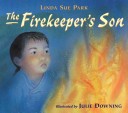
In Korea in the early 1800s, news from the countryside reached the king by means of signal fires. On one mountaintop after another, a fire was lit when all was well. If the king did not see a fire, that meant trouble, and he would send out his army. When his father is unable to light the fire one night, young Sang-hee must take his place. Sang-hee knows how important it is for the fire to be lit, but he wishes that he could see soldiers just once.
French language version of A Proper Acadian. Set during the American Revolution, a young man from Boston is sent to Acadia and faces deportation.
Smoke Over Grand Pré provides a glimpse into the lives of people who lived during the period that led up to the Acadian deportation. The eviction of Acadians from Nova Scotia by the English gove ment represents an important chapter in the history of Nova Scotia and of Canada.
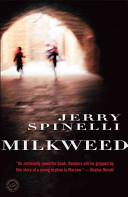
A stunning novel of the Holocaust from a Newbery MedalistHe’s a boy called Jew. Gypsy. Stopthief. Filthy son of Abraham.He’s a boy who lives in the streets of Warsaw. He’s a boy who steals food for himself, and the other orphans. He’s a boy who believes in bread, and mothers, and angels.He’s a boy who wants to be a Nazi, with tall, shiny jackboots of his own-until the day that suddenly makes him change his mind.And when the trains come to empty the Jews from the ghetto of the damned, he’s a boy who realizes it’s safest of all to be nobody.Newbery Medalist Jerry Spinelli takes us to one of the most devastating settings imaginable-Nazi-occupied Warsaw during World War II-and tells a tale of heartbreak, hope, and survival through the bright eyes of a young Holocaust orphan.
See the review at WOW Review, Volume 3, Issue 2
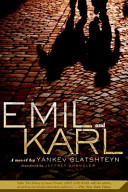
This is a unique work. It is one of the first books written for young readers describing the early days of the event that has since come to be known as the Holocaust. Originally written in Yiddish in 1938, it isone of the most accomplished works of children’s literature in this language. It is also the only book for young readers by Glatshteyn, a major American Yiddish poet, novelist, and essayist. Written in the form of a suspense novel, Emil and Karl draws readers into the dilemmas faced by two young boys-one Jewish, the other not-when they suddenly find themselves without families or homes in Vienna on the eve of World War II. Because the book was written before World War II, and before the full revelations of the Third Reich’s persecution of Jews and other civilians, it offers a fascinating look at life during this period and the moral challenges people faced under Nazism. It is also a taut, gripping, page-turner of the first order.
See the review at WOW Review, Volume 3, Issue 2